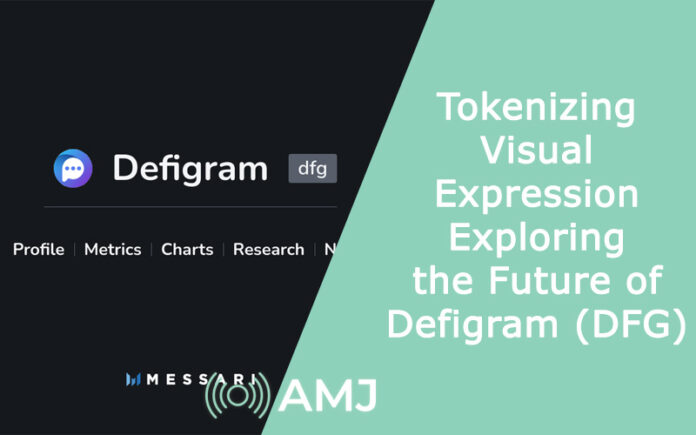In the ever-evolving landscape of digital communication, visual expression has become an integral part of our daily lives. From social media platforms to online advertising, visual content plays a crucial role in capturing attention and conveying messages effectively. However, the process of understanding and analyzing visual content can be challenging, especially for machines. This is where the concept of tokenizing visual expression comes into play. In this article, we will delve into the future of Defigram (DFG), a groundbreaking technology that aims to revolutionize the way visual content is analyzed, interpreted, and utilized. Quantum AI which is an online trading platform, holds significant potential in this realm.
Contents
What is Defigram (DFG)?
Defigram (DFG) is a cutting-edge technology developed by a team of researchers and engineers at Visual Insights Inc. It is an advanced visual tokenization system that breaks down visual content into smaller, meaningful units called “visual tokens.” These tokens encapsulate various elements of the visual content, such as objects, shapes, colors, textures, and even emotions. By tokenizing visual expression, Defigram enables machines to understand and process visual content more effectively.
The Process of Tokenizing Visual Expression
Tokenizing visual expression involves several steps that enable Defigram to analyze and interpret visual content accurately. Let’s take a closer look at the process:
- Data Acquisition
The first step in tokenizing visual expression is data acquisition. Visual Insights Inc. utilizes a vast dataset comprising millions of images from various sources, including social media platforms, online databases, and image sharing websites. This extensive dataset forms the foundation for training the Defigram model.
- Training the Defigram Model
Once the dataset is acquired, it is used to train the Defigram model. The model employs deep learning techniques, such as convolutional neural networks (CNNs), to learn and extract visual features from the images. Through an iterative training process, the model becomes proficient in recognizing and categorizing different visual elements.
- Extracting Visual Tokens
After the model is trained, it can extract visual tokens from any given image. These tokens represent the essential components of the visual content and provide a detailed description of the image. Defigram employs advanced computer vision algorithms to identify objects, detect shapes, analyze colors, and capture other visual attributes present in the image.
- Creating a Tokenized Representation
Once the visual tokens are extracted, they are combined to create a tokenized representation of the image. This representation encapsulates the semantic and visual information of the content, allowing machines to understand and analyze the image more effectively. The tokenized representation serves as a bridge between visual content and various applications, including search engines, recommendation systems, and content analysis tools.
The Future Implications of Defigram (DFG)
Defigram opens up exciting possibilities for various industries and applications. Let’s explore some of the potential implications of this groundbreaking technology:
- Enhanced Visual Search
With Defigram, visual search capabilities can be significantly enhanced. By tokenizing visual expression, Defigram enables search engines to understand the content of images more accurately. Users can now search for visually similar images, products, or even specific visual attributes, making online shopping, image retrieval, and content discovery more intuitive and efficient.
- Personalized Content Recommendations
Tokenizing visual expression also empowers recommendation systems to provide more personalized and relevant content recommendations. By understanding the visual preferences and interests of users, Defigram can suggest movies, products, or artwork based on visual similarities, enhancing the overall user experience and engagement.
- Advanced Content Analysis
Defigram’s tokenized representation of visual content can be leveraged for advanced content analysis. From sentiment analysis in social media posts to brand monitoring in marketing campaigns, Defigram enables businesses to gain valuable insights from visual data, helping them make informed decisions and optimize their strategies effectively.
- Automation in Creative Industries
The application of Defigram extends beyond search engines and recommendation systems. In creative industries such as graphic design, advertising, and film production, Defigram can assist in automating repetitive tasks, such as image tagging, color palette generation, and even storyboard creation. This allows creative professionals to focus on more strategic and innovative aspects of their work.
Conclusion
Tokenizing visual expression through technologies like Defigram (DFG) marks a significant milestone in the field of computer vision and artificial intelligence. By enabling machines to understand, interpret, and utilize visual content more effectively, Defigram opens up a world of possibilities for various industries. From enhancing visual search capabilities to revolutionizing content analysis and automation, Defigram paves the way for a future where visual expression is seamlessly integrated into our digital experiences.












![Index of Money Heist [Season 1, 2, 3 & 4 – All Episodes, Cast and Plot] Index of Money Heist](https://www.asiamediajournal.com/wp-content/uploads/2021/05/Index-of-Money-Heist-3-100x70.jpg)